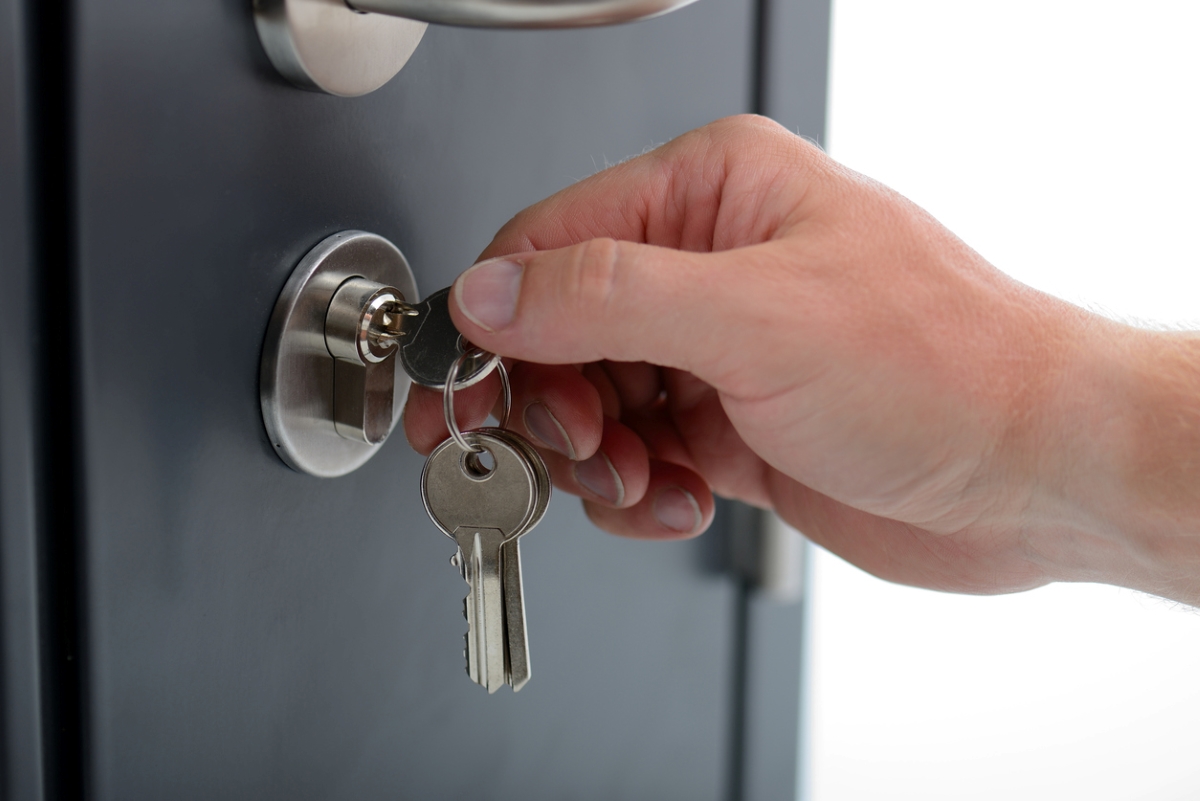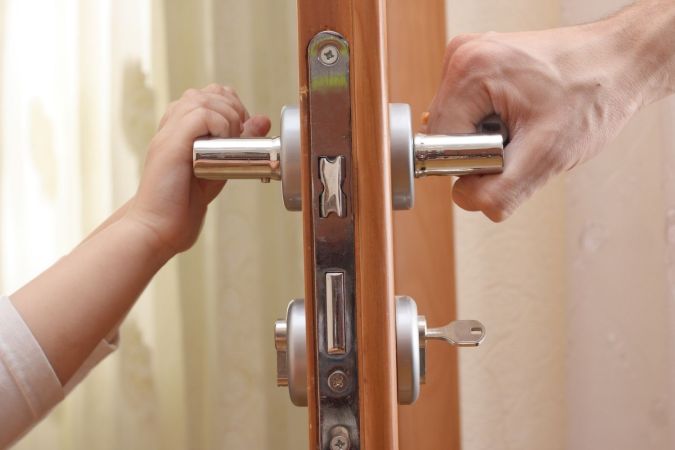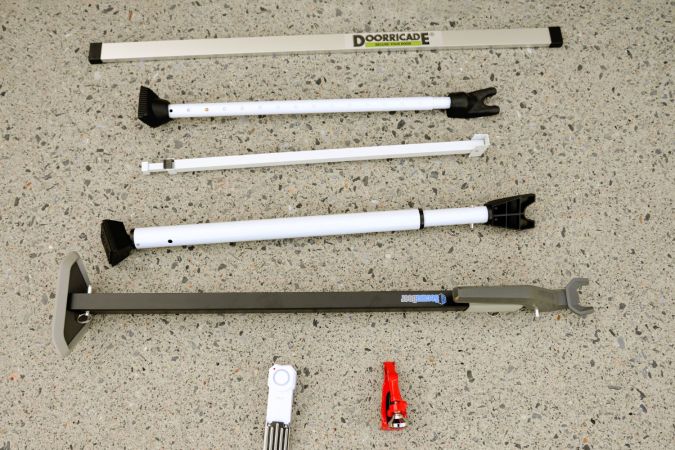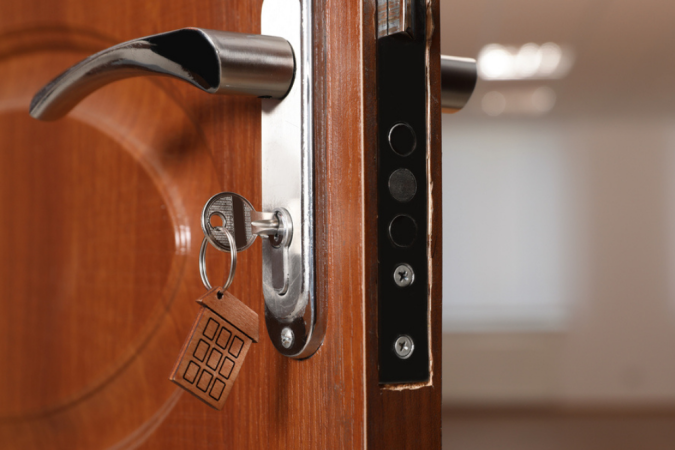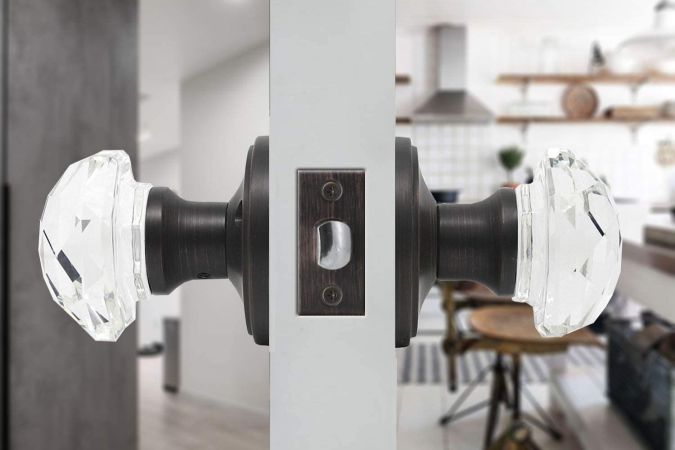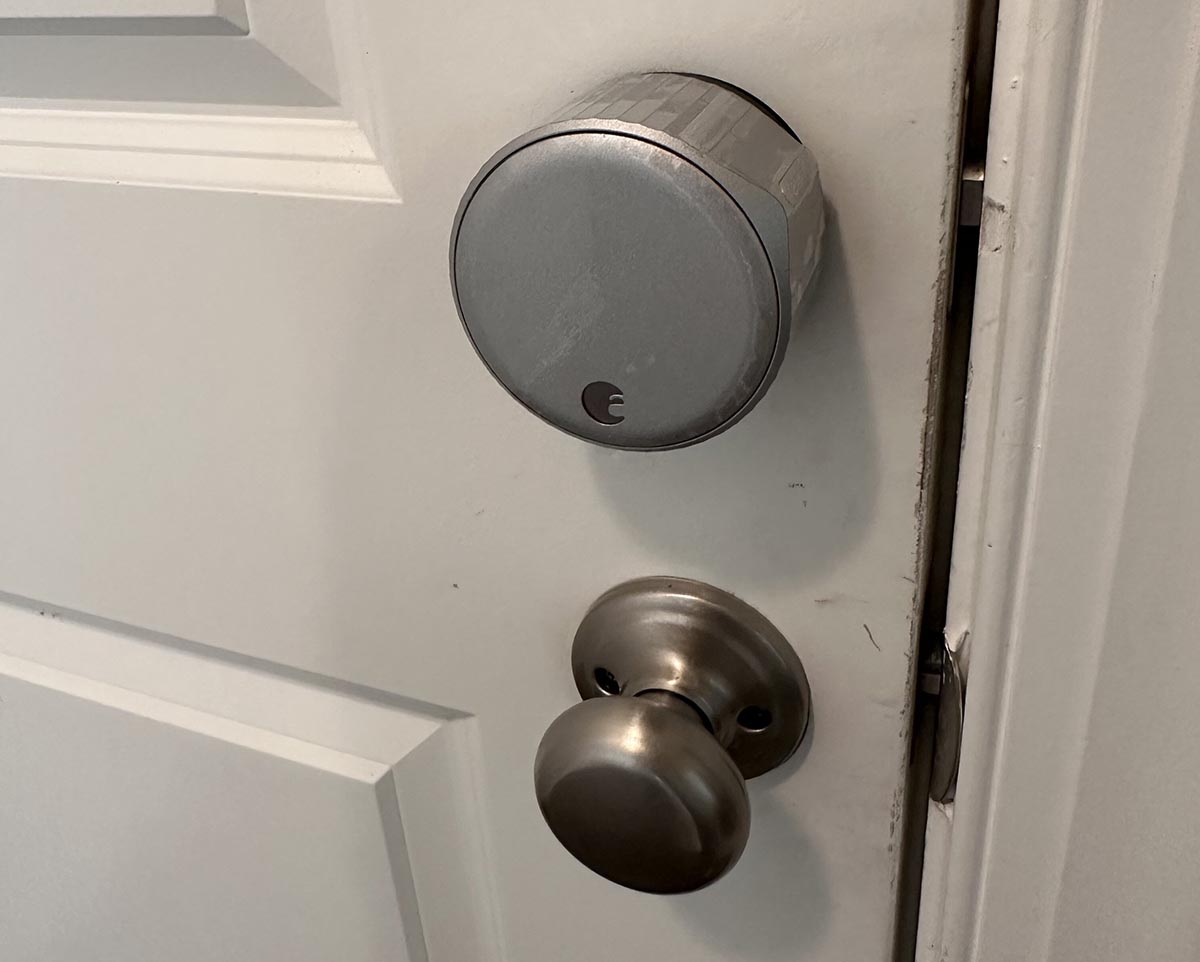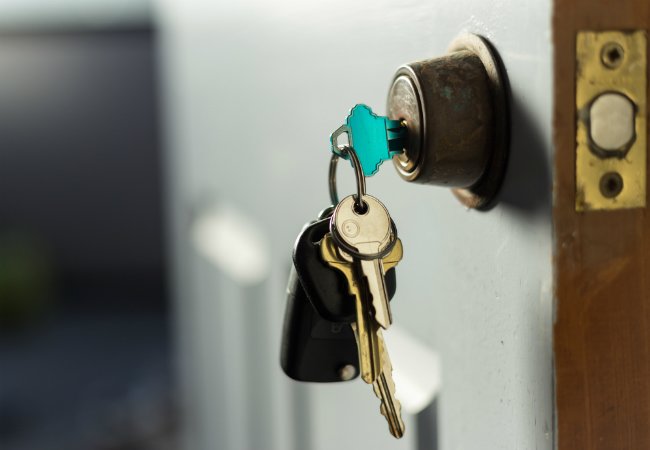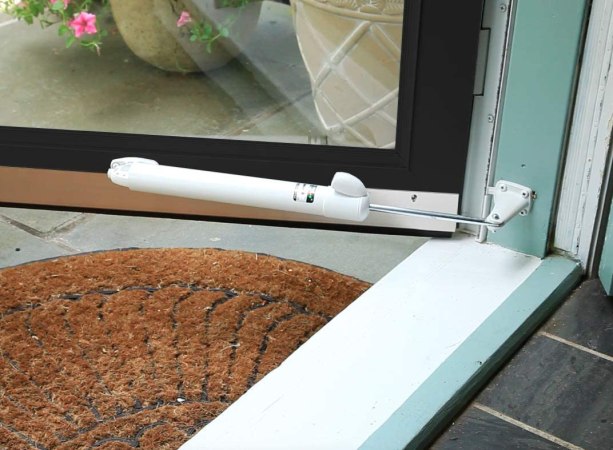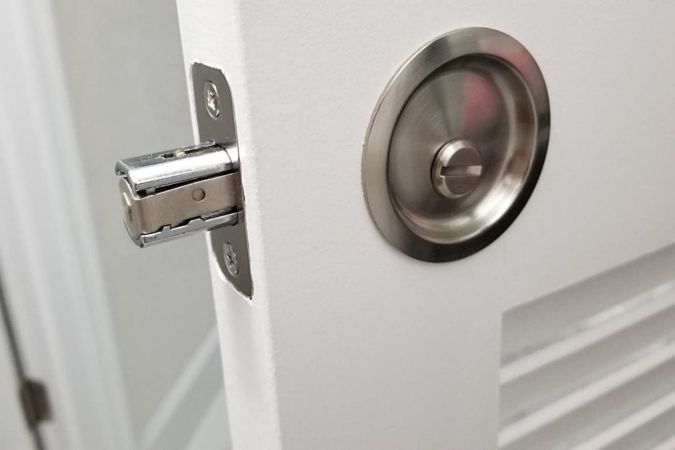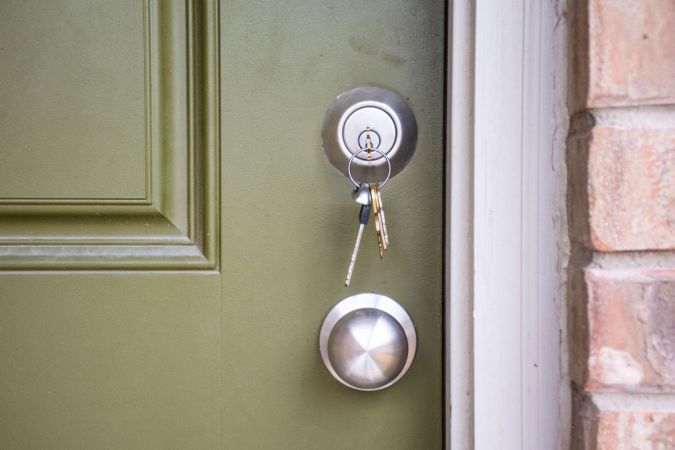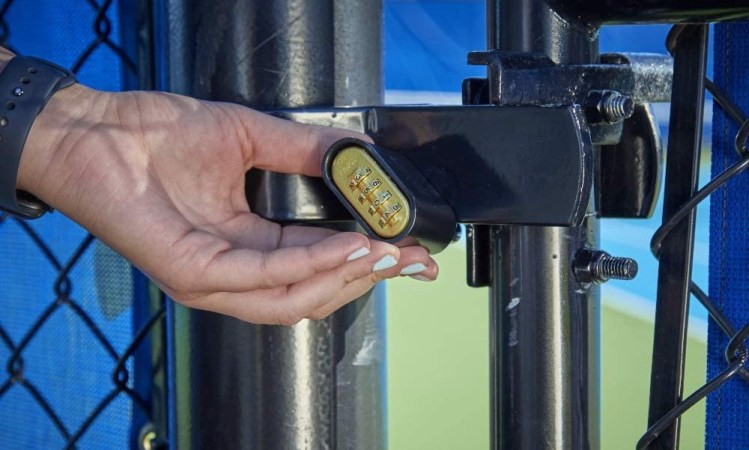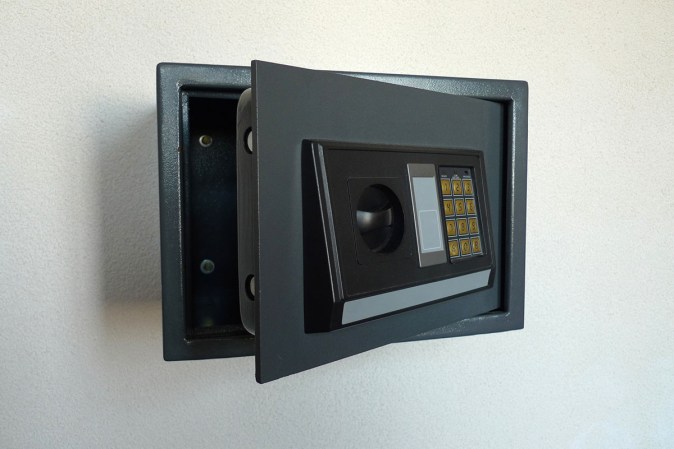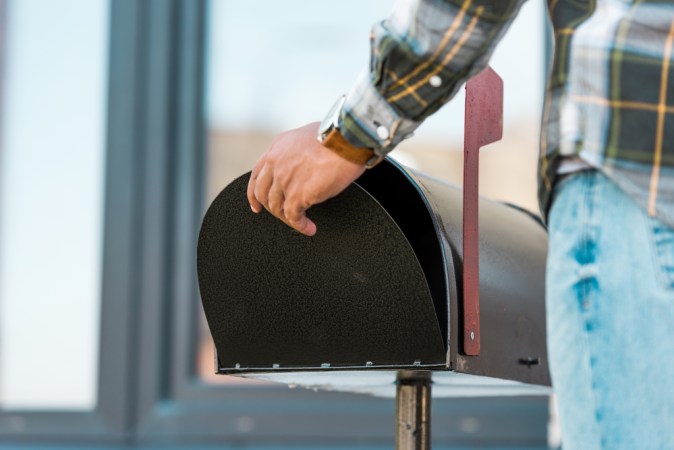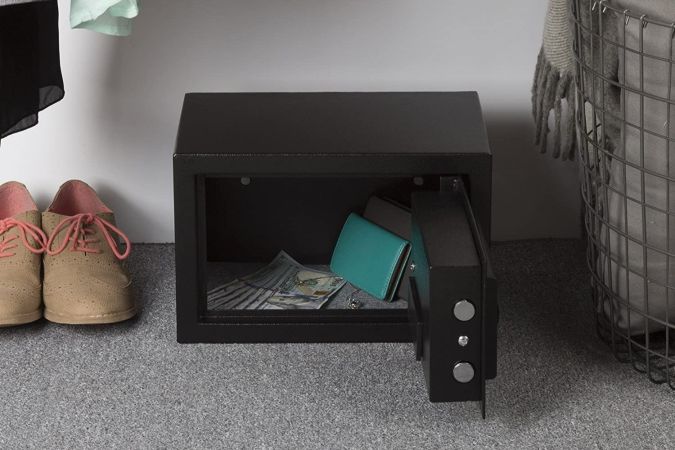We may earn revenue from the products available on this page and participate in affiliate programs. Learn More ›
It’s been one of those days. You caught every red light on your way home from work, your laundry wasn’t ready at the dry cleaners, and now—when you finally get home and are dying to sink into your sofa—you can’t get your key out of the front door lock.
While frustrating, it’s usually not that difficult for a DIYer to remove a key that’s stuck, so long as nothing is broken inside the lock. Forcing a key can cause it to break off in the lock, so take a deep breath and give one of these easy DIY fixes a try that can save you time and money waiting on a locksmith. If the worst comes to pass, we’ll also explain what to do in case the key breaks.
Why is my key stuck in the door lock?
One of the most common causes of a key stuck in a lock is a lock assembly that needs lubrication. Over time, dirt or dust can build up in the lock, covering the pins. Each time you push the key in, you help push dust inside. Other causes of stuck keys are:
- A loose part in the lock assembly
- A sharp burr or ridge on a new key
- A bend in an old key
- Use of the wrong key
When a key gets stuck, it can break if you force it too much. Since keys typically are made of soft metals like brass or nickel, they can bend or crack over time.
How to Get a Key Out of a Lock
Regularly lubricating a door lock once or twice each year and checking keys and lock assemblies for signs of damage or wear can help prevent a key getting stuck in a lock. But it still can happen, so try one of these tricks for getting a key out of a lock to release a stuck key.
1. Push the plug in.
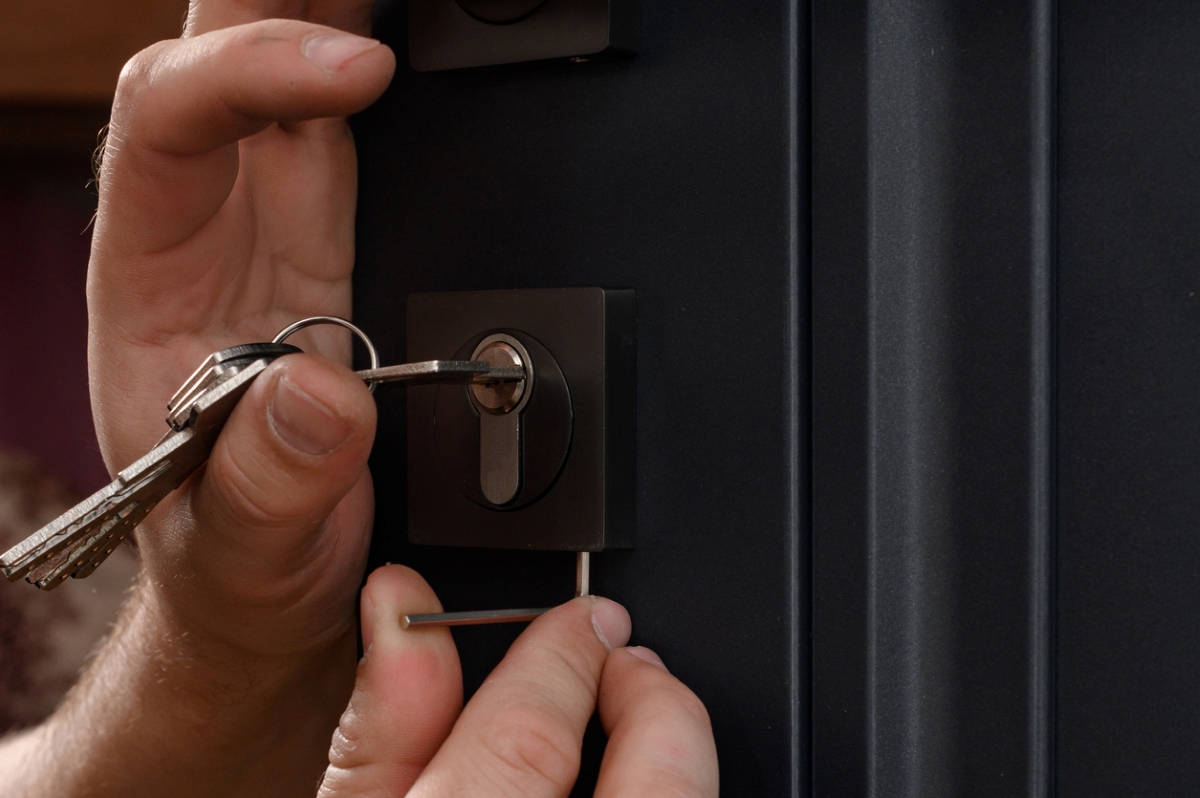
You don’t need any tools to free a key by pushing the plug, but you do need patience and know-how. The keyhole plug in a pin tumbler lock (found in deadbolts and key-in-knob locks) is just one part of a larger locking cylinder.
The face of the plug is visible; it is the small circle surrounding the keyway—and your stuck key. If this plug is loose, it can move slightly within the cylinder and prevent the pin tumblers from aligning, which makes it difficult to unlock the door or remove the key. Take these steps to free the key:
- Push your key in as far as it will go.
- Turn the key so that the keyway slot is in the exact position it was in when you inserted the key; this is the correct position for the pin tumblers to align in the cylinder.
- With your other hand, use the tip of your finger to push firmly on the face of the plug next to the key.
- Gently twist and pull the key out.
The light pressure applied in Step 3 prevents the plug from shifting as you try to remove the key. In many instances, that’s all it takes.
2. Lubricate the lock.
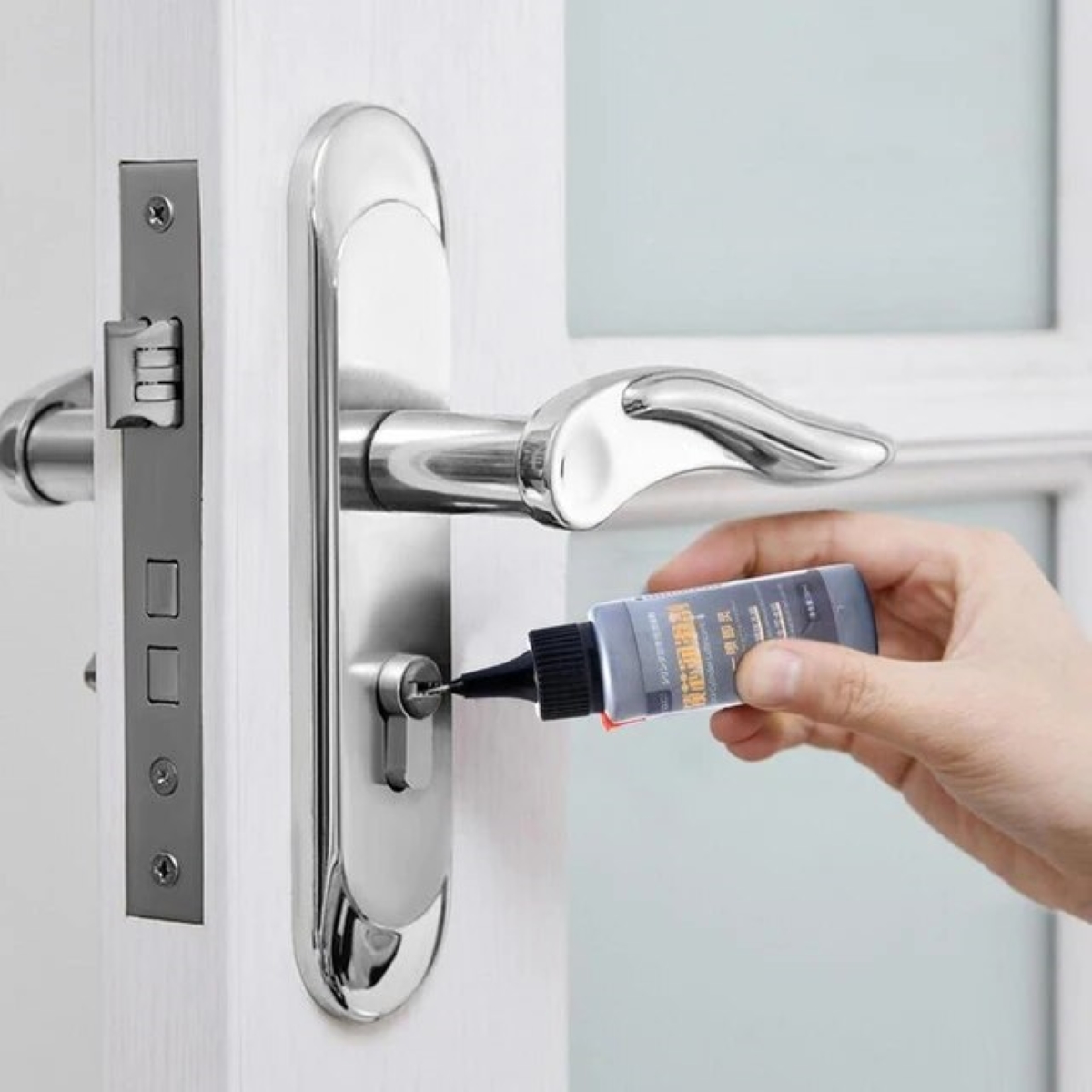
If stabilizing the cylinder on your house’s lock doesn’t work, it might not be a loose plug that’s causing the problem. New keys and imperfect copies are notorious for hanging on tumbler pins.
Dry lubricants used for lock maintenance come in handy when you’re trying to remove a jammed key in a lock, and most cans come with a spray nozzle or tiny straw nozzle that can reach into keyhole-sized spaces. The best dry lubricants for door locks contain one of the following ingredients:
- Graphite powder is the best choice, except if you live in a humid climate (humidity will turn the powder into gunk). The downside is that the powder can be messy, so look for a product with a nozzle, and follow label directions for use.
- Silicone-based dry lubricants, which can loosen a key effectively, are better for humid climates than graphite.Take care to avoid spraying them on nearby surfaces.
- Teflon-based dry lubricants (polytetrafluoroethylene, or PTFE) is durable and protects locks by not attracting dust or debris.
- Oil-based lubricants like the original WD-40 formula can work if all else fails, but their residue might attract more dust and debris.
Once you have the lubricant in hand, take these steps to free the stuck key:
- Hold the application straw or nozzle right above the key, aiming the product into the hole.
- Wiggle the key (up and down, not side to side) to work it out of the lock.
- Once it’s out, use a fine file to smooth away any barbs or sharp points on the key teeth to prevent future sticking, or ask a key maker to file them down for you.
RELATED: 7 Things to Know Before Replacing Door Locks
How to Retrieve a Broken Key Stuck in a Lock
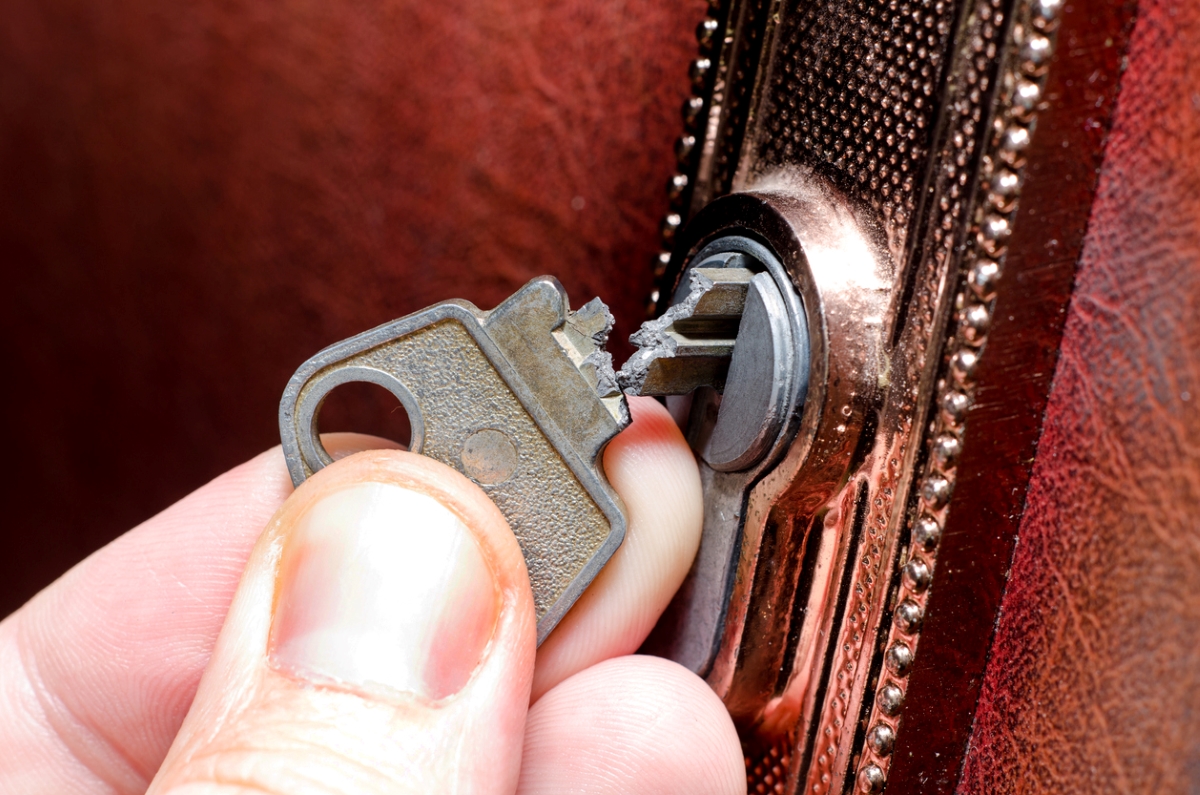
Excessive twisting and prying at a stuck key could end up breaking the key in half inside the lock. Should this happen, don’t continue pushing to try to extract the key and try these DIY methods for how to remove key stuck in lock.
1. Lubricate the keyway and pull the key’s end out.
- As with a stuck key, slick the keyway with a squirt of spray graphite or lubricant.
- Attempt to grab any visible end of the key using a pair of needle-nose pliers or a pair of tweezers.
- If the key comes out, have a new key made right away.
2. Fish out the key with a small metal object.
After lubricating the lock, if the broken key is still stuck, you can try to insert one of the following common items to help loosen the key, to hook a tooth in the key, or to pull the key out using one of the grooves in the broken metal. Ideas for small metal leverage include:
- Bobby pins
- Paper clips
- Safety pins
- Swiss army knife tools
3. Try a key extractor kit.
If too little metal is extending from the keyway to grip with pliers or you try and fail with a paper clip or other metal device, you can try using a broken key extractor kit. Professional locksmiths use versions of these to remove broken keys from locks. Several designs are available, but most work by inserting a tiny metal appendage into an opening around the broken key. Extractor tools include:
- Hooks, which you insert on the side of the key with teeth, and try to hook it onto one of the teeth. A double hook offers a better chance of success than a single one.
- Spiral tools help extract keys with rounded grooves through a twisting motion.
- Sawtooth extractors fit into more squared-off grooves, using leverage to twist or pull the key out.
These kits can be hard to find in neighborhood hardware stores and aren’t usually shipped quickly from online retailers, so it’s helpful to have one on hand in an emergency kit in the car and in the house. Having one of these kits with multiple picks prevents being locked out of your home or unable to start the car when a key is stuck in the ignition. Also, some key extractor kits contain more tools than are necessary for the average DIYer.
Here are the basic steps for using a key extraction kit:
- Use a flashlight and magnifying glass to see into the keyway, and determine the shape of grooves or whether the key’s teeth are accessible with a hook tool.
- Select the specialty tool from the kit that best fits the key grooves or problem lock, and slide the slim implement along the recessed groove of the key as far as it will go.
- Once in place, turn it so that its hook can grab the key’s tip or tooth (or twist several times with a spiral tool), then pull it back toward you to dislodge the remaining chunk of key.
How to Prevent a Key from Sticking or Breaking
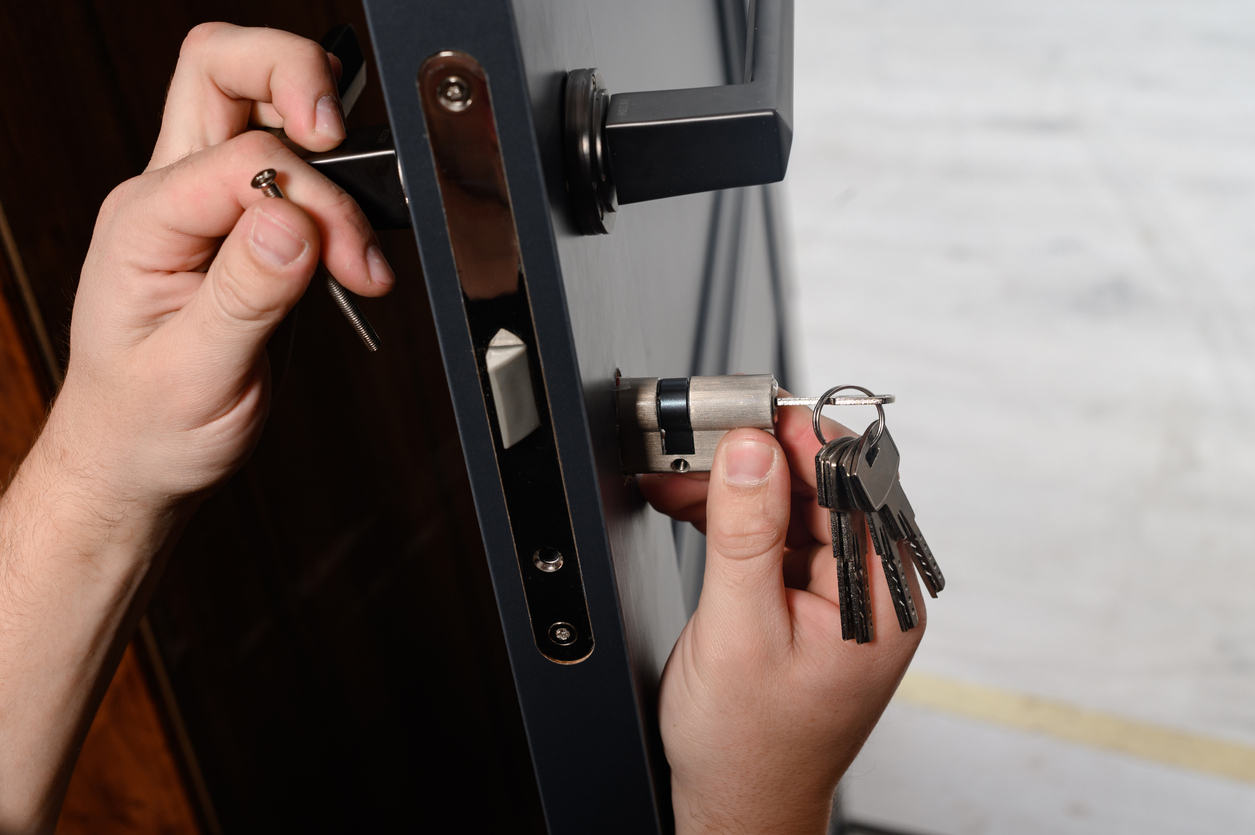
Preventing stuck or broken keys in any lock is easier in the long run than having to remove them. A warped key is more likely to stick or break down the road than a straight key, and a dirty lock is more likely to stick. The following tips can help prevent getting a key stuck or breaking a key in a lock.
- Make a spare key and have it handy to switch onto your keychain if your primary one begins to bend with wear.
- Give all locks a quick squirt of dry lubricant every few months to dissolve any gunk and keep the locking mechanisms moving freely.
- Never reuse a key that warps or that sticks in a clean or lubricated lock; replace it.
- Regularly pay attention to or inspect the lock to ensure it is not loose or sticking.
- If necessary, have a sticking lock rekeyed to replace the worn pins and key.
- A broken key likely will damage a lock, plus all lock parts wear over time and can even warp. In these cases, replace the lock completely.
- Consider switching to a keyless door lock.
When to Call a Locksmith
If a key still is stuck after trying the fixes above, rest assured you have given it your best shot—this job is truly one for the professionals. Call a locksmith to either retrieve the key or replace the lock altogether. It’s also best to call a locksmith if you have no way to secure your home and you need to remove a key quickly.

